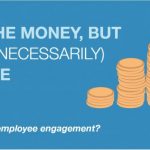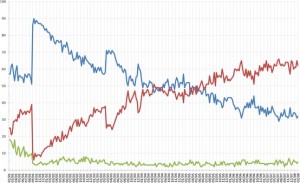If you ever decide you need the services of a professional research company, you need to understand the differences among data, information, and insight going into the research process.
And in order to effectively partner with such a research service, you need to be able to understand the data and information the research produces, so you can benefit from its insights.
But in order to be able to understand that, you need to understand the difference between data, information, and insights.
Data is the basic building block in research. These are the cold, hard facts that information and insights are built on. An example of data would be, “our research shows that 32.5% of your sales force reports that if offered a job elsewhere, they would take it.”
As far as data goes, that’s just a number. And depending on your HR knowledge regarding sales force attrition, you might be immediately horrified, or you might think that’s pretty good. But it’s that not knowing that makes data pretty useless. It’s only when the data is placed inside a context — is a 32.5% loss of sales force good or bad? — that turns that data into information.
Information is where things get more interesting and valuable to you as a manager. It’s where you can actually apply what the data means to you. For example, the average percentage of sales force attrition is usually around 33%. Armed with that information, you know your sales team is right on track. And knowing that information can lead to having insights about the research.
Insights are information significant to your organization. This is where the true partnership between you and your research company becomes important. It’s almost a marriage between the two players, with both sides bringing some important knowledge to the relationship. An insight could be that a year ago you implemented a salesforce retention strategy. Based on the earlier score (data) and the comparison to industry average (information) you can conclude that the retention strategy didn’t work.
At IQS, we’re the experts in the research development analysis, but we cannot know the working conditions within every client or posses the industry background of a 20 year veteran. But together, our two organizations can identify some pretty important findings about your company.
To continue with our example, if your sales team is currently lethargic and just not meeting their sales numbers, research might show that only 10% of your sales personnel would consider taking another job (data) which is well under the in the industry average (information). Since that’s below the average, it sounds like people may be complacent. It’s one thing if the sales team was exceeding their numbers, because they wouldn’t want to leave a place where they’re excelling.
But this lack of engagement may represent a toxic level of complacency and laziness within the company. This insight can help you decide if you need to perhaps replace team members or put more or different expectations on them.
From the bricks to the mortar to the design and function, the insights you gain through the use of a professional research team can be well worth the time and effort, because it leads to deeper levels of understanding within your organization.





